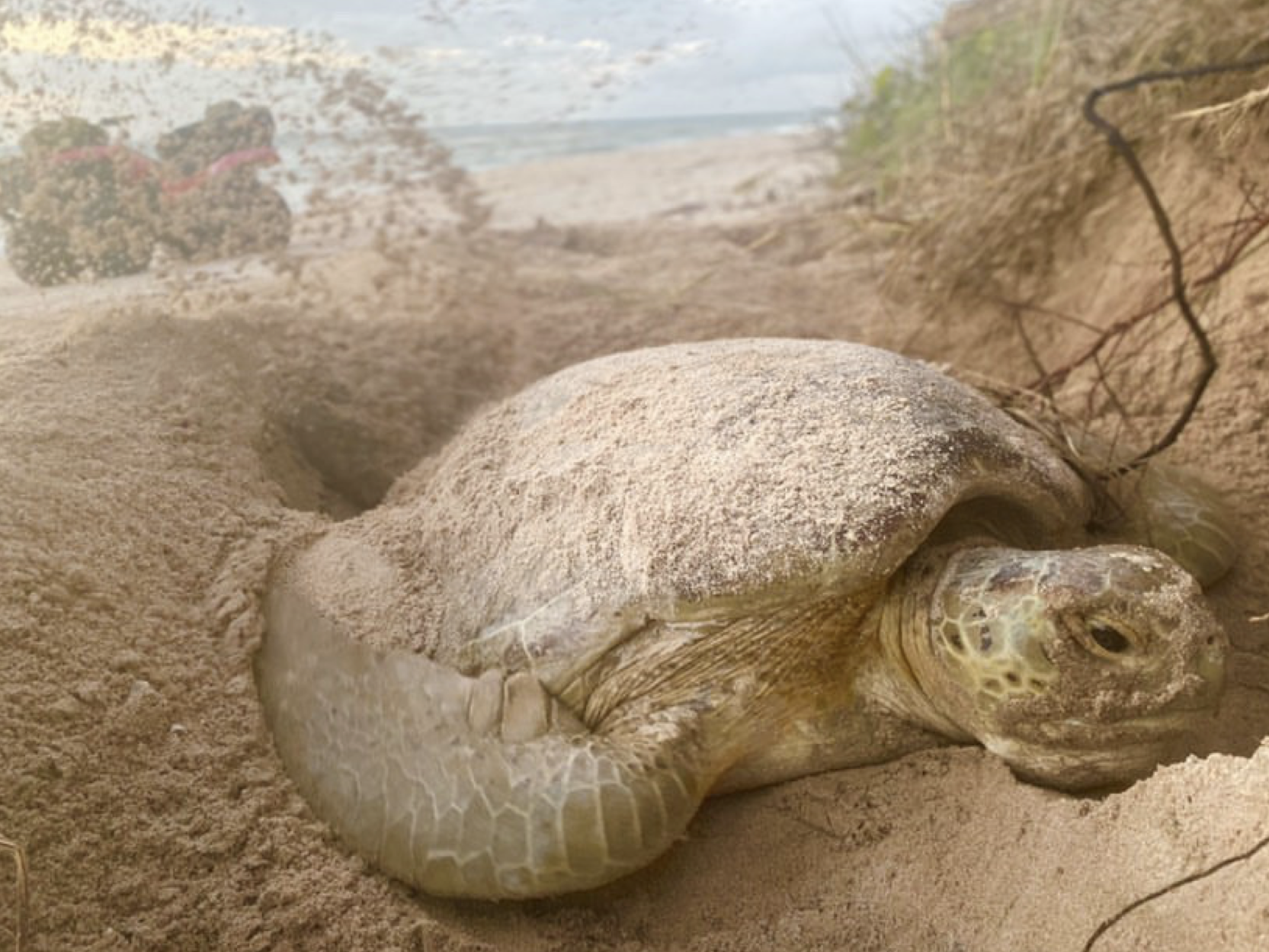Tourism is down, but nesting success may be up. Here’s what scientists are saying and how travelers can help.
It’s among nature’s greatest spectacles. Each year, thousands of sea turtle mothers clamber ashore on the Atlantic and Gulf coasts of Florida, meticulously dig into the sand to lay their eggs, and then return to the sea. After incubating for around two months, the eggs—a single female can lay more than a hundred of them—hatch and the tiny turtles strive to reach the water.
Approximately 90 percent of sea turtle nesting in the United States happens on Florida’s beaches, according to the Sea Turtle Conservancy, a Gainesville-based research and conservation organization. In the 2019 season, the state’s Fish and Wildlife Research Institute documented more than 53,000 loggerhead turtle nests during its annual survey of 27 beaches. In addition to loggerheads, Florida hosts green and leatherback turtle nesting. Four other sea turtle species ply the world’s waters—Kemp’s ridley, olive ridley, hawksbill, and flatback—and the vast majority of all species are classified as threatened, endangered, or critically endangered.
During Florida’s nesting season, which runs from March through October, the sands are normally awash with humans. This year the coronavirus pandemic severely curtailed travel and required some state jurisdictions to close their beaches for weeks. While this was a bust for sun worshippers, it may have been a boon to sea turtles. But 2020 has also been unprecedented in terms of the number of hurricanes battering the southeastern U.S. As this nesting season comes to a close, researchers share some initial findings and tips for how travelers—even grounded ones—can help protect sea turtles.
RARE REPRIEVE FROM HUMANS
One important question scientists are asking this year is whether fewer disturbances have led to more successful nesting. During sea turtle nesting, there can be “false crawls,” in which a female encounters a distraction between the water and a prospective nesting site. Whether it’s a camera-toting tourist, a beach chair, noise, or light, the sea turtle’s plan is interrupted, sending the animal back to the ocean without laying eggs.
“We actually did find a significant difference during the beach closures and then after in terms of a successful rate of nesting,” says Justin Perrault, director of research for the Loggerhead Marinelife Center, a Juno Beach-based nonprofit focused on education, research, and rehabilitation of sea turtles. The center has observed approximately 17,000 nests along Juno, Jupiter-Carlin, and Tequesta beaches this year. “During the closures, loggerheads successfully nested 61 percent of the time,” he says. “When the beaches reopened, that number dropped to 46 percent.”
On the southwestern Gulf coast, the Sanibel-Captiva Conservation Foundation’s Sea Turtle Program surveys 18 miles of beach between Sanibel Island and Redfish Pass. This year, staff documented record loggerhead nest counts, totaling 926. During the month of May, the false crawl rate was 23 percent lower than the same time last year. While the beaches they monitor weren’t closed, beach parking was prohibited from March 18 through June 1 and there were state-issued stay-at-home orders.
Other scientists contend that the pandemic’s effect has been more limited. The Mote Marine Laboratory and Aquarium’s Sea Turtle Conservation and Research Program, which monitors 35 miles of beach from Longboat Key through Venice, recorded 3,716 nests—the fourth-highest number in the 39-year history of the program. But because these beaches were off-limits for only a few weeks at the beginning of the nesting season, researchers are reluctant to make a connection with the closures.
At the Archie Carr National Wildlife Preserve in Brevard County, the UCF Marine Turtle Research Group has observed 12,968 loggerhead, 8,102 green, and 40 leatherback nests. The loggerhead counts were “within the range of what we’d expect,” says director Kate Mansfield. The leatherbacks “had a good year,” she says, and green turtles laid more than anticipated. “The turtles’ food intake and quality of food available at the foraging areas play a role in determining if they will nest or not … so the die was already cast in terms of what turtles would be nesting this season by the time the pandemic hit.”
(Related: We’ve put sea turtles at risk, but they are surviving—despite us.)




